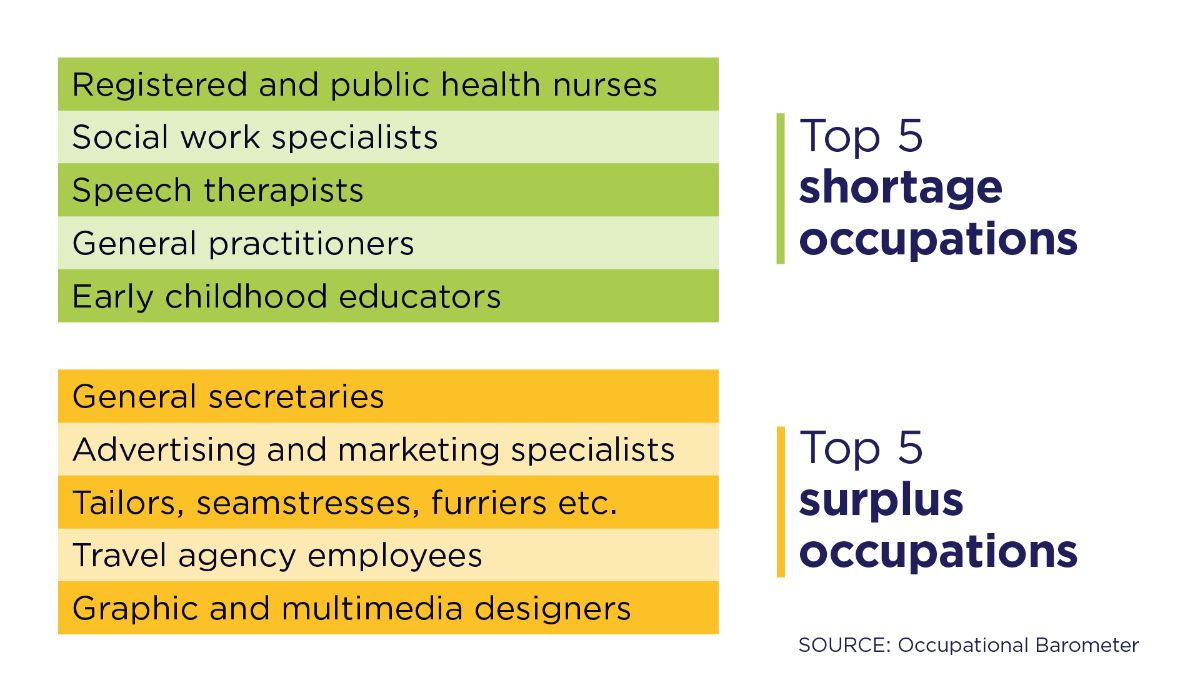Occupational Barometer: COVID-19 reduced the number of shortage occupations, trend unchanged in surplus occupations

The impact of the coronavirus was obvious on occupations suffering from labour shortage, whereas no sudden changes have occurred in occupations with labour surplus. These were the findings of the Occupational Barometer published by the Ministry of Economic Affairs and Employment on 18 September 2020. The barometer is based on estimates provided by Employment and Economic Development Offices (TE Offices) regarding the near-term outlook for key occupations. The barometer was conducted in August–September 2020.
This autumn, 31 occupations were defined as shortage occupations nationwide. At 60, the number of shortage occupations was clearly higher in the spring, before the coronavirus epidemic. In the barometer conducted in autumn 2019, there were 52 shortage occupations.
Of the 200 occupations included in the occupational barometer, 34 are now surplus occupations. The number of surplus occupations has increased since last spring, but the number started to grow before the coronavirus outbreak.
Labour shortage most severe in the health and social services sector
According to the Occupational Barometer, there is a significant shortage of skilled labour, especially in the health and social services sector. These occupations represent a bigger share of the top 15 shortage occupations than ever before. Even before the coronavirus crisis, barometers showed that nurses and social work specialists were occupations in which several regions in Finland experienced a major labour shortage. However, the coronavirus epidemic did not significantly change the situation in occupations such as registered nurses and public health nurses.
The leading shortage occupations now also include programmers and application developers. New on the list of top 15 shortage occupations, representing the health and social services sector, are bioanalysts and home care assistants, which are not very large occupational groups.
Changes in the list of top 15 surplus occupations have not been as dramatic as in shortage occupations. General secretarial occupations continue to show labour surplus. New on the list of top 15 surplus occupations are travel agency employees, hotel receptionists and electronics and automation installers. The creative industry continues to be strongly represented in the top surplus occupations.
Regional differences in the construction sector; tourism, food and beverage sectors affected by the coronavirus
The number of shortage occupations has decreased especially in the construction sector, but there are significant regional differences. Although there is some labour surplus in the food and beverage sector, some occupations continue to suffer from labour shortage. As the coronavirus epidemic progressed, travel and tourism related occupations rose to the top of surplus occupations.
The next employment outlook by occupation will be prepared in spring 2021.
How and why is the Occupational Barometer conducted?
The TE Offices prepare an estimate of the labour market outlook for different occupations. TE offices provide their expert estimate of the demand for workforce in around 200 occupations and of the balance between the demand and supply of workforce in the following six months.
The TE Offices base their estimates on the information received from employers and jobseekers through interviews and employer visits, and on other data such as barometers and monitoring systems.
The Occupational Barometer aims to increase the balance between job seeking and job vacancies, and promote occupational and regional mobility.
Inquiries:
Mika Tuomaala, Ministerial Adviser, Ministry of Economic Affairs and Employment, tel. +358 29 504 8450, mika.tuomaala(at)tem.fi

